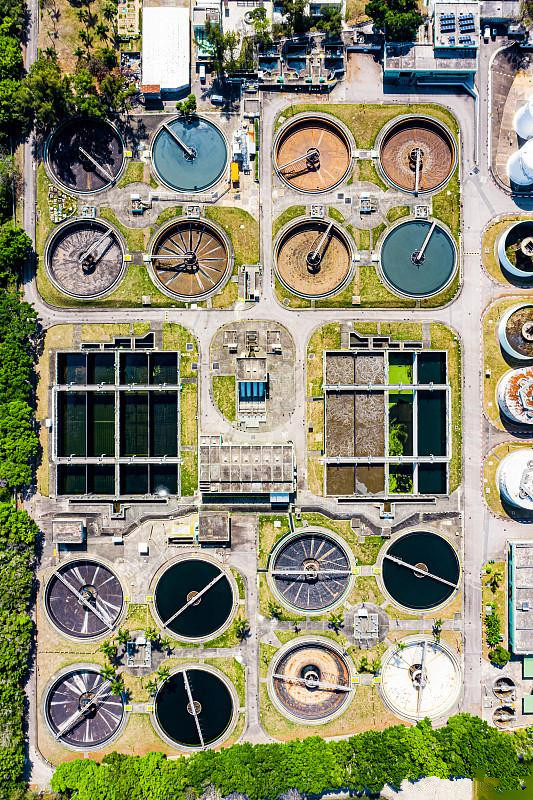Wastewater is a by-product of plant processes and uses, so the contaminants present in wastewater can vary depending on the pollutants exposed. Some common contaminants include.
Biochemical oxygen demand
Biochemical oxygen demand (BOD) is the amount of dissolved oxygen required by aerobic organisms to break down organic matter into smaller molecules. High levels of BOD indicate elevated concentrations of biodegradable material present in the wastewater, which may be caused by the introduction of pollutants such as manure or fertilizer runoff. Organic waste, whether from domestic or industrial sources, can elevate it. When these levels are elevated, this can deplete the oxygen needed by other aquatic organisms to survive, leading to algal blooms, fish kills and harmful changes in the aquatic ecosystem from which the wastewater is discharged.
Nitrates and phosphates
If large amounts of nitrate and/or phosphate are not removed from wastewater and these nutrients are discharged into the local environment, they can increase BOD and lead to extensive weed growth, algae and phytoplankton. This can lead to eutrophication or deoxygenation of the water column, which kills organisms and can lead to hypoxia or environmental dead zones. They can enter wastewater streams in a variety of ways, including human and food waste, detergents and pesticides.
Pathogens
Pathogens are bacteria, viruses, fungi or any other microorganisms that may be present in wastewater that can cause a variety of health problems, including acute illness, serious digestive problems or death. When domestic or industrial wastewater contains these harmful pathogens and is not treated, it can transmit diseases such as cholera, dysentery, salmonellosis, hepatitis A, botulism and giardia. Humans are most likely to ingest pathogens by drinking and/or eating contaminated beverages and/or food.

Metal Products
As a result of various industries, manufacturing processes and household plumbing, the most common contaminants in metals are metals that can cause serious damage to the environment and human health when left in wastewater at high concentrations. They are particularly destructive because they do not break down and tend to accumulate, resulting in a toxic environment.
The following is an overview of some of the more common metals found in wastewater and their potential effects on humans and the environment. According to the Agency for Toxic Substances and Disease Management (a federal public health agency of the U.S. Department of Health and Human Services), the effects mentioned .
- Cadmium; this metal is commonly used in the manufacture of batteries, pigments and plating for humans and can cause lung damage, gastrointestinal disorders, kidney damage and even death. It has also been linked to lung cancer.
- Chromium; This metal, commonly used in the manufacture of various metal alloys (e.g. stainless steel), causes skin irritation, breathing difficulties, ulcers, anemia, and damage to the male reproductive system. It is labeled as a carcinogen.
- Copper; found in wires, pipes, sheet metal, etc., can also be used to treat plant diseases, for water treatment or as a preservative. High doses of copper can irritate the nose, mouth and eyes. It can also cause headaches, dizziness, nausea and diarrhea.
- Lead; Lead contamination, often found in pipes and batteries, can cause serious health problems in children and adults.
- Manganese; Manganese is used in the production of steel to improve hardness and strength, and it is also used in the production of battery paints and cosmetics. High exposure to manganese can damage the nervous system, leading to motor delays and behavioral changes/inattention.
- Mercury; These metals are commonly released into the atmosphere from mining deposits, emissions from coal-fired power plants, burning municipal and medical waste, cement production, and uncontrolled releases from factories that use mercury, which can cause brain and nervous system damage as well as being highly toxic to humans.
Total suspended solids
Total suspended solids (TSS) in wastewater, which are organic and inorganic solids suspended in water, can be harmful to aquatic life like many of the other pollutants listed. They can also be problematic if wastewater is reused in a process, so the level of harm will be determined depending on whether you need to discharge wastewater at a public treatment plant (POTW) or in the environment, or reuse it in a process. TSS will. TSS can reduce oxygen levels in the aquatic environment and kill insects. They can also scale and fouling of pipes and machinery.
Total dissolved solids
Total dissolved solids (TDS) are any anions, cations, metals, minerals or salts found in wastewater. They can cause problems with aquatic life, irrigation and crops, and may also leach into groundwater. TDS can be produced in wastewater from almost any industry.
Synthetic Chemicals
When pesticides and other chemicals are used in manufacturing processes, they can be transmitted to humans and the environment through wastewater, thereby causing damage to the environment and human health. Some of the common chemicals found in wastewater include hexestrol, dioxins, PCBs, DDT and other pesticides. These “endocrine disruptors” can block hormones in the body and affect the functions that these hormones control.
